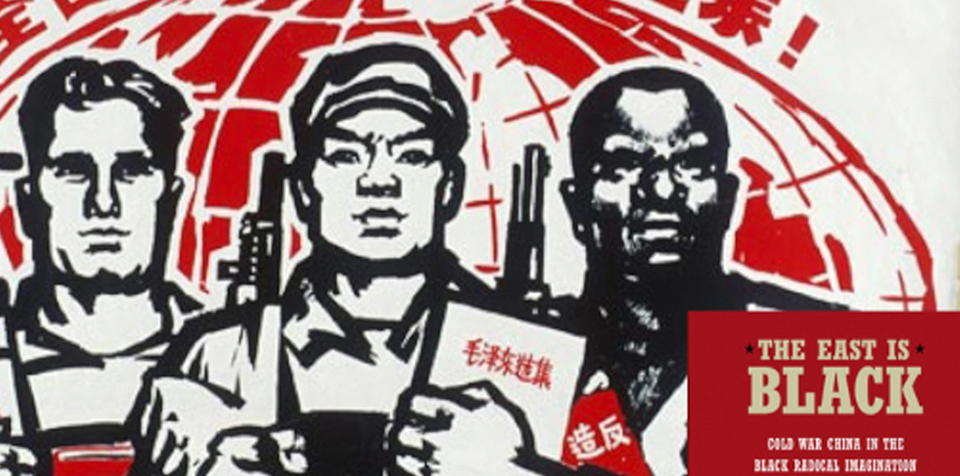
Oppressed and exploited peoples seek allies where they can, domestically and internationally. Prior to the Civil War, African Americans, like the abolitionist Frederick Douglass, sought allies in Great Britain, as it had abolished slavery in 1833. Additionally, workers everywhere, including in the United States, sought allies in the Soviet Union after the 1917 revolution. Similarly, to some, China became a beacon of hope after its successful 1949 revolution.
In Robeson Taj Frazier’s The East is Black: Cold War China in the Black Radical Imagination we learn that “activists and thinkers of diverse ideological leanings…confront[ed] the limits of the welfare state, liberal democracy, racial discrimination, and the inequality and conditions engendered by capitalism,” often by looking East, toward China.
To Frazier, “The leftists and black-nationalist internationalists…represented one of the most dynamic U.S.-based forces against the systemic violence and exploitation generated by domestic racial oppression, global white supremacy, Western imperialism, and the expansion of global capitalism, militarism, and corporate injustice by the United States and its allies.”
Specifically, Frazier points to Paul Robeson and W.E.B. DuBois as early champions of the Chinese Communist Party and later the People’s Republic of China. Robeson, the internationalist, noted, “I’ve learned that my people are not the only ones oppressed. That it is the same for Jews or Chinese as for Negroes…,” which partly explains why he would sing what would become the Chinese national anthem “March of the Volunteers” to a crowd of 7000 in Harlem in 1940.
According to Frazier, Robeson’s singing of “March of the Volunteers” was just one of the “multiple avenues of support” he showed for Chinese self-determination. Robeson also raised funds for Chinese defense against Japanese occupation on behalf of the United China Relief initiative and acted as honorary director of the Chinese Defense League.
Additionally, other Black radical activists, like W.E.B. DuBois, Shirley Graham DuBois, William Worthy, Vicki Garvin, and Mabel and Robert Williams, “built upon Robeson’s metaphor of shared struggle.”
However, China’s—or the Soviet Union’s or Great Britain’s, etc.—support of African-American equality wasn’t simple altruism. In short, “U.S. racial oppression provided foreign countries with easy ammunition to criticize U.S. postwar foreign-policy ideology,” a fact not lost on astute members of the Communist Party USA, the Soviet Union, and China.
But it wasn’t just Communists who made the connection between domestic civil rights and international pressure geared toward winning democratic concessions.
Frazier’s telling of the travels and travails of the journalist William Worthy, who wrote for the largest circulation Black newspaper in the country, the Baltimore Afro-American, is informative and sympathetic. To Frazier, “Worthy employed journalism and foreign correspondence as a transnational political practice…[that] linked the U.S. black freedom struggle to foreign anti-imperialist movements.” As a result, he “drew the wrath of the U.S. State Department, which perceived Worthy’s renegade style of journalism as a threat to U.S. foreign interests.” Subsequently, a battle ensued over his passport and his right to travel.
With the rise of Maoism, particularly in the 1960s—coupled with the Sino-Soviet split, the perception among some that the Soviet Union had abandoned its early revolutionary internationalism and that Cuba had gone down the Soviet path—China became a symbol of guerrilla warfare embraced by left adventurists domestically.
By the late 1960s and early 1970s numerous groups, such as the Revolutionary Action Movement and the Progressive Labor Party, among others, had been drawn “into China’s ideological orbit.” The results were simultaneously hilarious and divisive, dangerous and disruptive, depending on the organization.
Regardless, within a few years, China’s perceived revolutionary fervor would sink like a brick. With President Nixon’s visit to China and the subsequent rapprochement—and tactical alliance against Soviet socialism—Black perspectives of China’s leading role in favor of African-American equality and anti-imperialism in Asia, Africa, and Latin America changed dramatically. China even aligned with apartheid South Africa, a focal point of growing domestic Black militancy partly led by the Communist Party USA-initiated National Anti-Imperialist Movement in Solidarity with African Liberation (NAIMSAL), which helped lead the anti-apartheid divestment movement.
Frazier concludes that “China sacrificed revolutionary ideology for pragmatism,” thereby betraying many of the Black radicals and anti-colonial struggles that had initially sought it as an ally against racism and capitalism.
The East is Black is an important contribution, well worth the read.
The East is Black: Cold War China in the Black Radical Imagination
By Robeson Taj Frazier
Duke University Press, 2015, 314 pages
ISBN-13: 978-0822357681
ISBN-10: 0822357682










